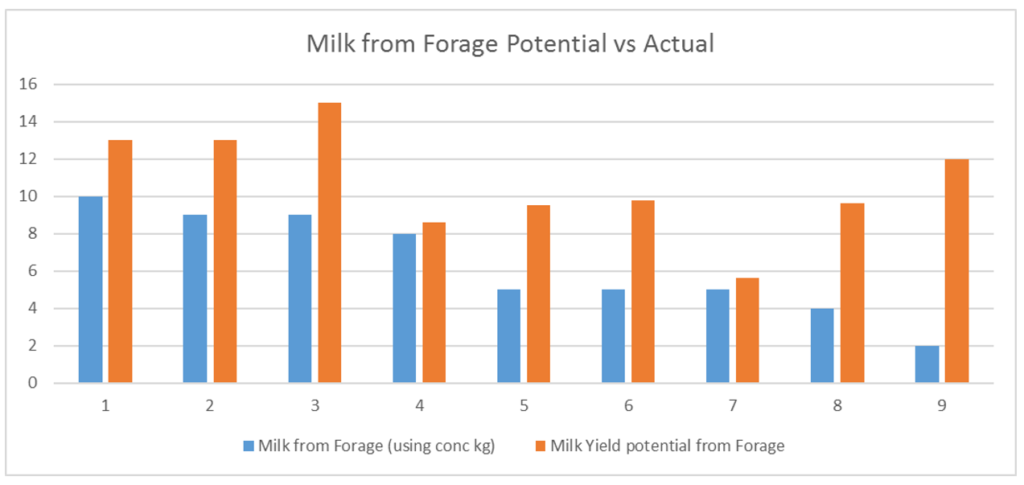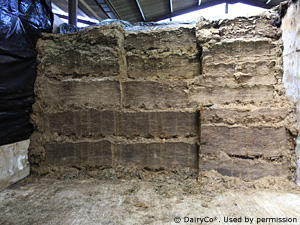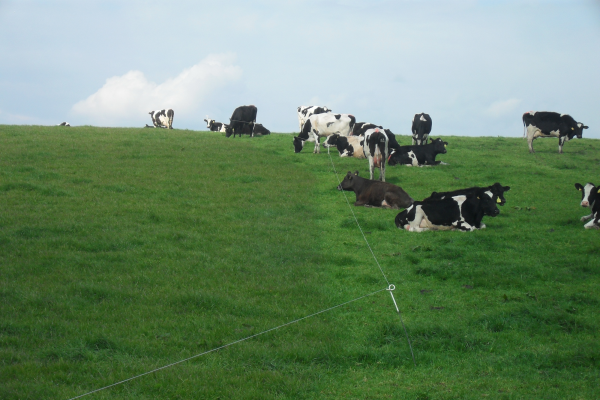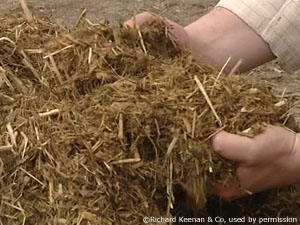Milk from Forage
Maximising Milk from Forage
Making maximum milk from forage, whether grazed grass or pitted forages, is the key driver in reducing purchased feed costs and improving the sustainability of the business. The key to success is the quality of the forage available to feed. The following table shows the average 2019 1st & 2nd cut silage analysis for the group and compares it with all the dairy pit silages analysed by SAC at that date.
| Group Average 1st & 2nd Cut | SAC Dairy Pit Silages 2019 | |
|---|---|---|
| Dry Matter | 33.2 | 28.6 |
| D Value | 70.8 | 70 |
| ME | 11.3 | 11.3 |
| Crude Protein | 15.7 | 13.3 |
| Ash | 8.6 | 82 |
| PAL | 489.1 | 856 |
| NDF | 63.7 | 45.6 |
| Sugars | 5.2 | 6.6 |
| SIP | 110.6 | 101 |
| pH | 4.2 | 4.1 |
The individual silage analysis information along with current ration details was entered into the FAS Milk from Forage calculator. This tool allows farmers to enter details of the concentrates fed (kg FW, DM% & ME) per head, to calculate the energy supplied by the concentrate portion of the diet. Milk yield, cow bodyweight and milk solids are taken account of and the calculator gives a figure for the remaining energy required in the diet which is being supplied form forage.
The highest Milk from Forage being achieved by the group is 10 litres with the lowest being 2 litres. It should be noted that there are differences in the potential milk from forage quoted on some silage analysis and what is actually achieved in the ration. This is due to other considerations which have to be taken into account when balancing a ration, including crude protein, milk solids and quantity of silage available.
The Group met in November 2019 to discuss Milk from Forage.
Sign up to the FAS newsletter
Receive updates on news, events and publications from Scotland’s Farm Advisory Service




